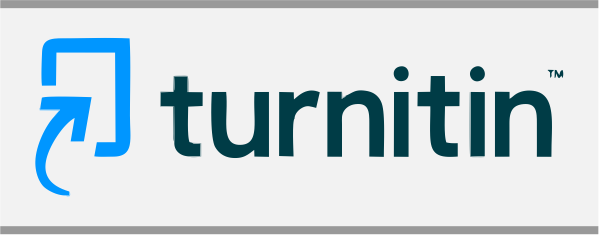EXPLORING ENGLISH STUDENT TEACHERS’ READING HABITS AND PREFERENCES
(1) IAIN Syekh Nurjati, Cirebon
(2)
(*) Corresponding Author
Abstract
Keywords
Full Text:
PDFReferences
Anderson, R. C., & Nagy, W. E. (1993). The vocabulary conundrum. Center for the Study of Reading Technical Report; no. 570.
Chen, C. N., Chen, S. C., Chen, S. H. E., & Wey, S. C. (2013). The Effects of Extensive Reading via E-Books on Tertiary Level EFL Students' Reading Attitude, Reading Comprehension, and Vocabulary. Turkish Online Journal of Educational Technology-TOJET, 12(2), 303-312.
Cho, K. S., & Hey-Jung, K. (2004). Recreational reading in English as a foreign language in Korea: Positive effects of a sixteen-week program. Knowledge Quest, 32(4), 36.
Channuan, P., & Wasanasomsithi, P. (2012). Promoting learner autonomy through an extensive reading program among second year undergraduate students of Naresuan University. E-Journal for Researching Teachers, 5, 1–23.
Commeyras, M., Bisplinghoff, B. S., & Olson, J. (2003). Teachers as readers. Perspectives on the Importance of Reading in Teachers’ Classrooms and Lives.
Cox, K. E., & Guthrie, J. T. (2001). Motivational and cognitive contributions to students' amount of reading. Contemporary educational psychology, 26(1), 116-131.
Cunningham, A. E. (2005). Vocabulary growth through independent reading and reading aloud to children. Teaching and learning vocabulary: Bringing research to practice, 45-68.
Dilshad, M., Adnan, A., & Akram, A. (2013). Gender Differences in Reading Habits of University Students: An Evidence from Pakistan. Pakistan Journal of Social Sciences (PJSS), 33(2).
Gardner, D. (2004). Vocabulary input through extensive reading: A comparison of words found in children's narrative and expository reading materials. Applied Linguistics, 25(1), 1-37.
Ghonsooly, B., & Elahi, M. (2010). Learners' Self-Efficacy in Reading and Its Relation to Foreign Language Reading Anxiety and Reading Achievement. Journal of English Language Teaching and Learning, 45-67
Guthrie, J. T., Wigfield, A., Metsala, J. L., & Cox, K. E. (1999). Motivational and cognitive predictors of text comprehension and reading amount. Scientific studies of reading, 3(3), 231-256.
Hafiz, F. M., & Tudor, I. (1989). Extensive reading and the development of language skills. ELT journal, 43(1), 4-13
Hsu, Y. Y., & Lee, S. Y. (2005). Does extensive reading also benefit junior college students in vocabulary acquisition and reading ability. In The Proceedings of the 22nd International Conference in English Teaching and Learning (pp. 116-127).
Hughesâ€Hassell, S., & Rodge, P. (2007). The leisure reading habits of urban adolescents. Journal of adolescent & adult literacy, 51(1), 22-33.
Imrie, A. (2007). Autonomy across the English curriculum through extensive reading. Paper presented at the Independent Learning Association 2007 Japan Conference: Exploring Theory, Enhancing Practice: Autonomy across the Disciplines, Kanda University of International Studies, Japan.
Krashen, S. D. 2009. Principles and Practice in Second Language Acquisition. Oxford: Pergamon Press.
Krashen, S. D. (2011). Free voluntary reading. ABC-CLIO.
Lee, S. Y., & Krashen, S. D. (1997). Writing apprehension in Chinese as a first language. ITL-International Journal of Applied Linguistics, 115(1), 27-37.
McGeown, S. P., Duncan, L. G., Griffiths, Y. M., & Stothard, S. E. (2015). Exploring the relationship between adolescent’s reading skills, reading motivation and reading habits. Reading and writing, 28(4), 545-569.
Mellon, C. A. (1990). Leisure Reading Choices of Rural Teens. School Library Media Quarterly, 18(4), 223-28.
Nagy, W. E. (1988). Teaching vocabulary to improve reading comprehension. Newark Delaware: International Reading Association.
Nakanishi, T. (2015). A metaâ€analysis of extensive reading research. Tesol Quarterly, 49(1), 6-37.
Noor, N. M. (2011). Reading habits and preferences of EFL post graduates: A case study. Indonesian Journal of Applied Linguistics, 1(1), 1-9.
Ögeyik, M. C., & Akyay, E. (2009). Investigating reading habits and preferences of student teachers at foreign language departments. The International Journal of Language Society and Culture, 28, 72-78.
Parodi, G., Moreno-de-León, T., Julio, C., & Burdiles, G. (2019). Google or Gutenberg Generation: Chilean university students’ reading habits and reading purposes. Comunicar. Media Education Research Journal, 27(1).
Renandya, W. A., & Jacobs, G. M. (2002). Extensive reading: Why aren’t we all doing it. Methodology in language teaching: An anthology of current practice, 295-302.
RÃos, S. R., & Valcárcel, A. M. (2005). Reading: A meaningful way to promote learning English in high school. Profile Issues in TeachersProfessional Development, (6), 59-72.
Saito, Y., Garza, T. J., & Horwitz, E. K. (1999). Foreign language reading anxiety. The modern language journal, 83(2), 202-218.
Shen. L. (2006). Computer Technology and College Students’ Reading Habits. Chia-nan
annual bulletin, 32, pp. 559-572.
Spangler, K. L. (1983). Reading interests vs. reading preferences: using the research. The Reading Teacher, 36(9), 876-878.
Summers, K. (2013). Adult reading habits and preferences in relation to gender differences. Reference & User Services Quarterly, 52(3), 243-249.
Teng, F. (2018). A learner-based approach of applying online reading to improve learner autonomy and lexical knowledge. Revista Española de LingüÃstica Aplicada/Spanish Journal of Applied Linguistics, 31(1), 94-123.
Takahashi, W., & Umino, T. (2020). Out-of-Class Extensive Reading in Japanese as a Second Language: Enhancing Learner Autonomy Beyond the Classroom. Electronic Journal of Foreign Language Teaching, 17(1).
Ulu, H. (2019). Examining the Relationships Between the Attitudes Towards Reading and Reading Habits, Metacognitive Awarenesses of Reading Strategies and Critical Thinking Tendencies of Pre-Service Teachers. International Journal of Contemporary Educational Research, 6(1), 169-182.
Wigfield, A., & Guthrie, J. T. (1997). Relations of children’s motivation for reading to the amount and breadth of their reading. Journal of Educational Psychology, 89, 420 – 432. doi:10.1037/0022-0663.89.3.420
Wollscheid, S. (2013). Parents' Cultural Resources, Gender and Young People's Reading Habits-Findings from a Secondary Analysis with Time-Survey Data in Two-parent Families. International Journal About Parents in Education, 7(1).
Woody, W. D., Daniel, D. B., & Baker, C. A. (2010). E-books or textbooks: Students prefer textbooks. Computers & Education, 55(3), 945-948.
DOI: 10.24235/eltecho.v5i2.7413
Article Metrics
Abstract view : 60 timesPDF - 4 times
Refbacks
- There are currently no refbacks.
Â
This Journal is indexed by:
Â

This work is licensed under a Creative Commons Attribution 4.0 International License.










